JewelFreak
Ideal_Rock
- Joined
- Sep 3, 2009
- Messages
- 7,768
Could some of you more experienced folks give me more advice on how to look at photos -- we know you need to see the stone IRL to be sure if it's good or not, but I still want to know how to do it online the best possible, though nothing is certain from a pic. Sorry this is so long, will include all the info.
Here's why I'm confused. The tsavorite I ordered from Tan is first, then OUpeargirl's gorgeous one, which she just put up. Several people commented on the one I ordered being windowed, but OUpeargirl's not. The photos look pretty similar to me: What am I missing? (This is not a criticism of your beautiful purchase, OUpeargirl, in any way -- your pic just happened to illustrate the question I already had. It's gonna make a wonderful ring with the diamonds!) I'm mainly asking for advice from you expert types!
Please help me clarify this. When looking at the listing for the tsavorite, I watched the video a zillion times -- didn't see a window as it rotated, it looked more like reflection of the light source off the facets (unless it's a gigantic angle window). But to produce a window that big, wouldn't the pavilion need to be cut really really shallow? Dimensions are 7.5 x 6.2 x 4.2, not an exceptionally deep pavilion but surely not a very shallow one either. Photo of the pavilion looked symmetrical, no weird angles. Faceting is ok.
For comparison I'm also including a pic from a past Sotheby's catalog. This sapphire shows the same sort of reflection that might lead one to think it's windowed -- not likely, with the amount it sold for. Help!
Any advice or experience would really be appreciated!
--- Laurie
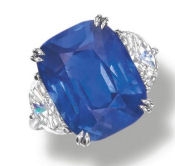
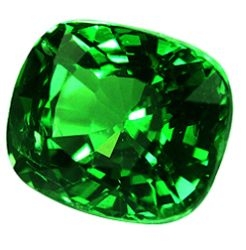
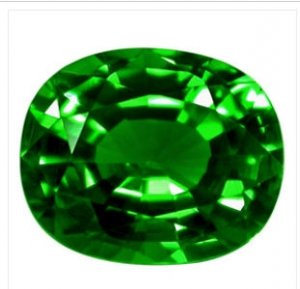
Here's why I'm confused. The tsavorite I ordered from Tan is first, then OUpeargirl's gorgeous one, which she just put up. Several people commented on the one I ordered being windowed, but OUpeargirl's not. The photos look pretty similar to me: What am I missing? (This is not a criticism of your beautiful purchase, OUpeargirl, in any way -- your pic just happened to illustrate the question I already had. It's gonna make a wonderful ring with the diamonds!) I'm mainly asking for advice from you expert types!
Please help me clarify this. When looking at the listing for the tsavorite, I watched the video a zillion times -- didn't see a window as it rotated, it looked more like reflection of the light source off the facets (unless it's a gigantic angle window). But to produce a window that big, wouldn't the pavilion need to be cut really really shallow? Dimensions are 7.5 x 6.2 x 4.2, not an exceptionally deep pavilion but surely not a very shallow one either. Photo of the pavilion looked symmetrical, no weird angles. Faceting is ok.
For comparison I'm also including a pic from a past Sotheby's catalog. This sapphire shows the same sort of reflection that might lead one to think it's windowed -- not likely, with the amount it sold for. Help!
Any advice or experience would really be appreciated!
--- Laurie








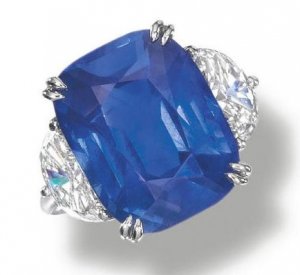
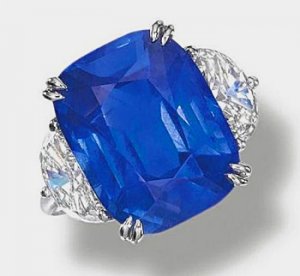
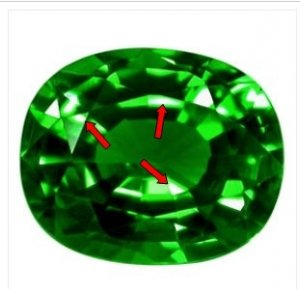


300x240.png)